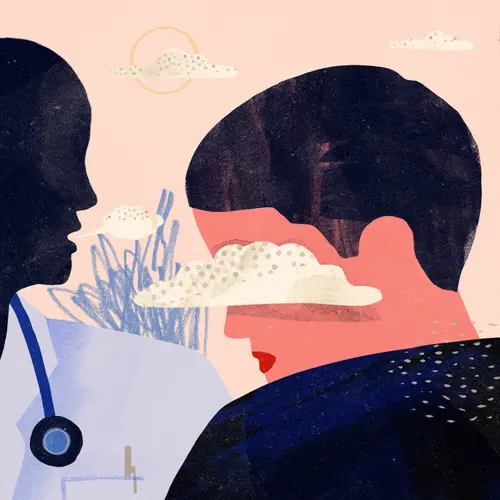Feb. 26, 2025 – Symbols of hope and emotional recovery remain standing amid the rubble of the Los Angeles wildfires.
There’s an olive tree, still alive, by the swimming pool of Wynne Wilson’s gutted home in the Altadena foothills. At the edge of the property, California live oaks were singed at ground level but appear healthy above.
And on Altadena’s Santa Rosa Avenue, aka Christmas Tree Lane, 135 deodar cedars survived a shower of embers. Residents hope to string lights on the 140-year-old trees this December as they have for more than a century.
“It gives me hope,” said Wilson, a landscape architect, whose home was destroyed in the Eaton Fire in January, which burned 14,000 acres in 24 days.
Nature’s regeneration can provide solace to people traumatized by wildfires, research suggests. Paired with the “biophilia effect” – humanity’s attraction to nature – surviving trees may help improve the mental health, well-being, and immune function of those facing years of rebuilding.
“Regenerating trees are a powerful symbol of recovery, and they provide aesthetic relief from the ‘blackness,’ ” said Karen Block, PhD, an associate professor at Melbourne School of Population and Global Health, who studied the mental health recovery of people after the 2009 bushfires in Australia that killed 173 people and burned over a million acres.
Wilson agrees. Her 2,500-square-foot home and grounds had been her sanctuary and her pride for 28 years, the place she hosted thousands of visitors who came to enjoy the native California landscape, including trees that have made the century mark.
Inspecting the oaks, she said, “These are Quercus agrifolia – their common name is coast live oak or California live oak – and they grow locally, are endemic to our area as well as throughout California.” That lifts her spirits. “I planted the oak acorns close to 25 years ago,” she said. She chose them for their ability to withstand heat, flooding, and fire, she said – and that they did.
Nature, Hope, Recovery
The January fires in Altadena and the Pacific Palisades burned more than 37,000 acres, killed at least 29 people, and destroyed more than 16,000 structures.
Within days of the fires starting, Wilson and a small group of landscape architects and others formed Altadena Green, a nonprofit organization with one goal.
“We want to protect as many of the viable trees in the public and private venues of the foothills community of Altadena,” said Stephanie Landregan, program director of landscape architecture, horticulture, and gardening at UCLA Extension. She and Wilson started the group, which quickly grew.
“This is so grassroots,” said Maggie Lobl, another Los Angeles landscape architect who jumped onto the team. Two arborists are also founding members.
Altadena Green wants to prevent the removal of healthy and mature trees that, as its organizers say, “embody the spirit of the place” and to preserve the culture, character, and heritage of Altadena’s tree canopy. Its website lists recommended arborists and shows residents how to request that a tree marked for removal by the U.S. Army Corps of Engineers be allowed to remain. It aims to partner with county and federal agencies to preserve trees.
A local woman is organizing a meetup group, Plant and Tree Propagators for Future Altadena. Members will grow plants and trees from their own gardens and give them away to residents when they’re ready to replant.
A naturalist and self-described tree hugger, Jason Wise (@jasonjourneyman), of Los Angeles, leads nature hikes and has reached out to fire-affected residents. “I created a category of free tickets on my hikes that are for those impacted by the fires,” he said, “and people have reserved those spaces.” He’ll offer information about rebuilding and best types of landscape plants at an upcoming “Rebuild with Resilience” event.
Regeneration and Mental Health
When Australian researchers studied the effects of the 2009 fires, they asked people to show them places in the community important to them.
For many, it wasn’t restaurants or gathering places, but rather their natural environment, often their own property. They talked about how the Australian bush, and often an individual tree, had been damaged and was now regenerating – and how important that was to them. Researchers shifted their focus toward nature’s role in recovery.
The "biophilia effect" might also explain why restoring trees and other landscape is good for mental health recovery after wildfires and other disasters.
“For individuals who have experienced the trauma of losing their homes, the survival of trees on their properties could symbolize hope and resilience,” said Michelle D. DiLauro, PhD, LCSW, an associate professor of social work at East Stroudsburg University in East Stroudsburg, Pennsylvania.
“Exposure to nature has been shown to improve mental health and well-being, and the presence of trees and natural environments can help reduce stress, anxiety, and depression, promoting overall emotional and physical health,” she said.
When many trees survive even when homes did not, as in Los Angeles, that could instill a sense of optimism and continuity, she said, “encouraging people to look forward to the future and the possibility of regrowth and renewal in their own lives.”
Or as Wilson put it when she and her colleagues marveled over the resilience of many trees: “If they can make it, I can, too.”
The Theodore Payne Foundation, which offers education about California native plant landscapes, offers information on Landscaping for Wildfire Resistance.
